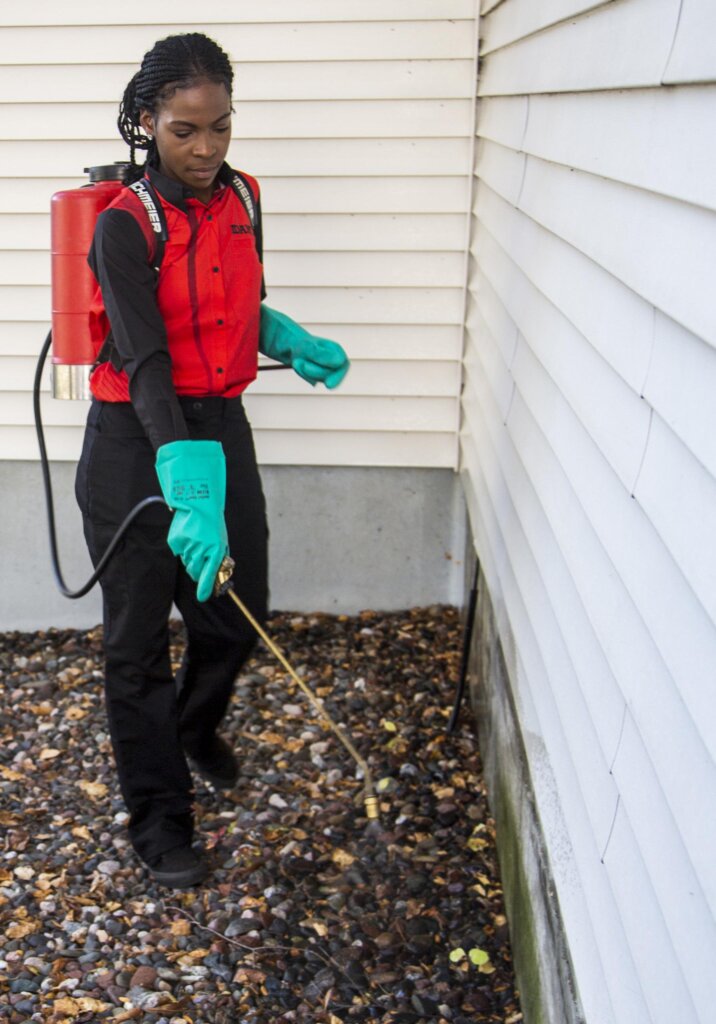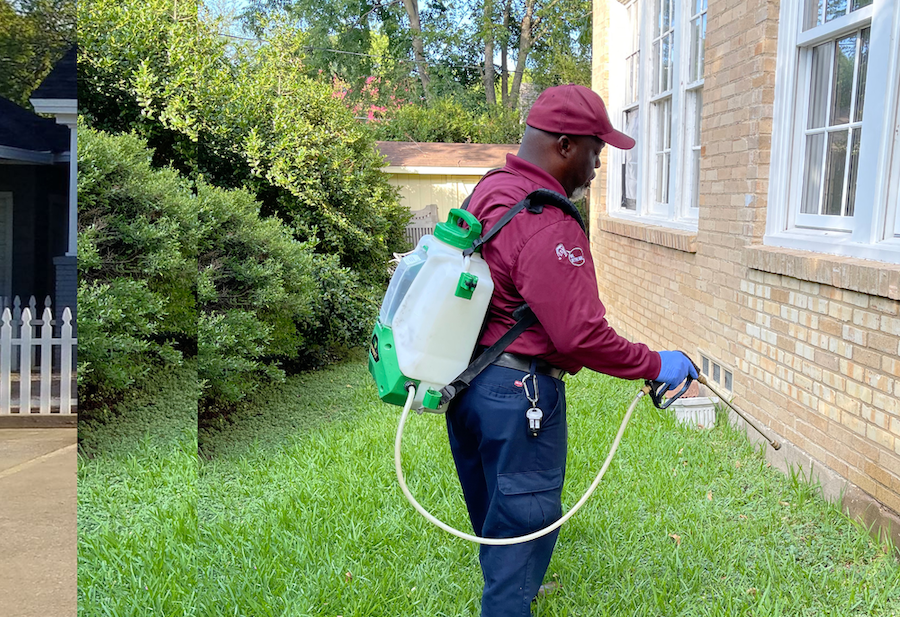A1 Bed Bug Exterminator Charlotte - Specialized Bed Bug Removal
A1 Bed Bug Exterminator Charlotte - Specialized Bed Bug Removal
Blog Article
Bed Insect Treatment Breakdown: Contrasting Chemical Vs. Non-Chemical Solutions
In the world of pest control, particularly when taking care of the relentless problem of bed insects, the choice between chemical and non-chemical treatment remedies can be an essential one. Both approaches provide unique advantages and drawbacks, influencing variables such as performance, safety considerations, and overall expense. By checking out the nuanced details of each approach, a more clear understanding of which path to pursue in resolving a bed insect invasion can be achieved.
Performance of Chemical Treatments
Chemical therapies for bed pest invasions have actually been widely acknowledged for their rapid and potent efficiency in eliminating these parasites. When thinking about the effectiveness of chemical treatments, it is essential to comprehend that they can offer a extensive and fast solution to a bed bug problem. Expert pest control men frequently count on pesticides to target bed bugs at numerous phases of their life cycle, consisting of eggs, nymphs, and grownups. These chemicals commonly function by disrupting the bed pests' nerves, causing paralysis and ultimate death.
Moreover, chemical treatments have the advantage of offering residual results, indicating that they can remain to eliminate bed pests even after the preliminary application. This residual activity is especially advantageous in combating any kind of possible re-infestations. Additionally, the rapid activity of chemical treatments can bring relief to people dealing with severe bed bug invasions, enabling them to regain control of their living spaces promptly.
Safety And Security Interest In Chemical Solutions
When making use of chemical remedies for bed bug treatment is ensuring the safety and security of residents and the environment,One critical aspect that needs mindful factor to consider. While chemical therapies can be effective in removing bed pests, they may pose risks otherwise taken care of effectively. One of the primary safety worry about chemical services is the potential damage they can create to human health and wellness. Exposure to particular chemicals utilized in bed pest treatments can result in respiratory concerns, skin inflammation, or other unfavorable responses, especially in individuals with pre-existing conditions or level of sensitivities. In addition, incorrect application or dose of chemical pesticides can lead to hazardous deposits lingering in the cured location, posing long-term health risks to occupants.
Furthermore, the ecological effect of chemical services is an additional substantial consideration. Some chemicals made use of in bed pest treatments might be harmful to useful insects, wild animals, and environments if they seep into the dirt or water systems. It is necessary to use chemical treatments carefully, adhering to security standards, and taking into consideration less harmful alternatives to alleviate these threats and make sure the safe and effective management of bed pest invasions.
Advantages of Non-Chemical Strategies
Taking into consideration the prospective safety and security problems and environmental effect linked with chemical services for bed insect therapy, checking out non-chemical methods presents a discover here promising alternative with several distinctive benefits. Non-chemical methods offer a safer choice for houses, specifically those with animals, youngsters, or individuals conscious severe chemicals. These strategies get rid of the threats of exposure to harmful compounds, minimizing the capacity for negative wellness effects. Additionally, non-chemical therapies are eco friendly, as they do not contribute to air or water pollution, making them a lasting option for pest control.
In addition, non-chemical solutions can be effective in targeting bed insects, including hard-to-reach locations where chemical treatments might not permeate - A1 charlotte pest control companies. Approaches such as warm treatment, vacuuming, heavy steam cleansing, and mattress encasements offer extensive eradication without the usage of unsafe chemicals.
Limitations of Non-Chemical Treatments

Furthermore, non-chemical therapies commonly call for multiple applications to attain successful eradication. This can be taxing and may not constantly assure full elimination of all bed bugs and their eggs, particularly in hidden or hard-to-reach locations.
Moreover, the success of non-chemical treatments greatly relies upon appropriate implementation and thoroughness, which can be challenging for people without professional competence. Insufficient application of non-chemical methods may lead to incomplete elimination, causing relentless problems and the need for extra treatments.
Therefore, while non-chemical treatments have their benefits, it is vital to acknowledge these restrictions and consider them when figuring out the most effective approach for managing bed pest invasions.
Price Comparison: Chemical Vs. Non-Chemical Options
Provided the constraints related to non-chemical treatments, an important facet to evaluate in the context of bed insect management is the cost comparison in between chemical and non-chemical options. Chemical therapies normally include the application of pesticides by specialists, which can vary from $250 to $900 per area, depending upon the extent of the infestation and the dimension of the location to be dealt with. In contrast, non-chemical therapies like heat treatment or heavy steam can be more costly, with expenses ranging from $1,000 to $6,000 for an entire home. While the first cost of chemical treatments might appear lower, several therapies might be called for to fully eliminate the problem, potentially enhancing the total expense. On the various other hand, non-chemical options may supply a more lasting and green remedy, although they can be cost-prohibitive for some people. Inevitably, when considering the expense of bed pest therapy choices, it is vital to evaluate the in advance expenses versus the performance and long-lasting sustainability of the picked method.
Conclusion

Taking into consideration the prospective safety and security concerns and ecological effect associated with chemical options for bed insect therapy, discovering non-chemical methods provides a promising option with several distinctive advantages.Given the limitations connected with non-chemical therapies, a crucial aspect to review in the context of bed bug administration is the price comparison in between chemical and non-chemical options. In contrast, non-chemical treatments like warm therapy or vapor can be extra expensive, with costs varying from $1,000 to $6,000 for an entire home. While the preliminary cost of chemical therapies may appear lower, numerous treatments might be required to fully remove the problem, possibly boosting the total price.In conclusion, when contrasting chemical and non-chemical bed pest treatment alternatives, it is important to think about effectiveness, safety and security, benefits, constraints, and cost.
Report this page